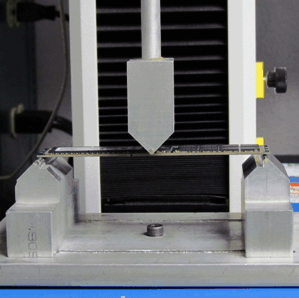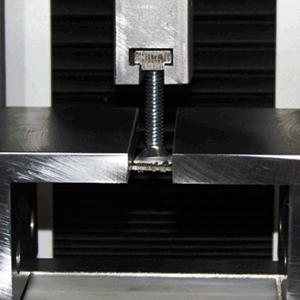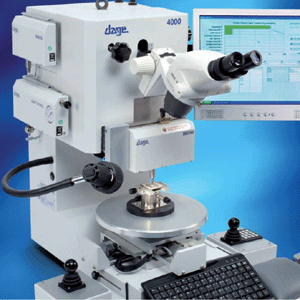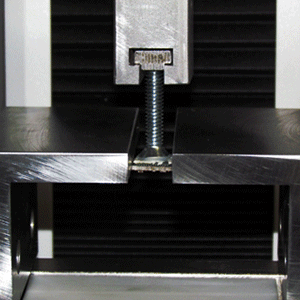
Mechanical Testing Services by Method
- Adhesion - Electromechanical Universal Tester
- Adhesive Bonding - Electromechanical Universal Tester
- Ball Shear - Bond Tester
- Bend Testing - Electromechanical Universal Tester
- Bond Strength - Electromechanical Universal Tester
- Brittleness - Electromechanical Universal Tester
- Cable Endurance - Electromechanical Universal Tester
- Contact Actuation - Mechanical Testing Applications
- Deflection Under Load - Electromechanical Universal Tester
- Durability - Mechanical Testing Applications
- Electronic Component Package Pull - Electromechanical Universal Tester
- Elongation - Electromechanical Universal Tester
- Engaging and Separating Forces - Electromechanical Universal Tester
- Fatigue Life - Mechanical Testing Applications
- Flexibility Endurance - Electromechanical Universal Tester
- Insertion and Withdrawal - Electromechanical Universal Tester
- Lap Shear Strength - Electromechanical Universal Tester
- Mechanical Cycling - Electromechanical Universal Tester
- Mechanical Strength - Electromechanical Universal Tester
- Peel Strength - Electromechanical Universal Tester
- Pushbutton Durability - Mechanical Testing Applications
- Shear Properties - Electromechanical Universal Tester
- Tweezer Pull - Bond Tester
- Wire Pull - Bond Tester
- Mechanical Testing Related Standards
Bond Tester
Bondtesters are mechanical testing tools used primarily but not limited to semiconductor assembly verification. Using precision load cartridges such as wire pull, tweezer pull/peel, die shear and ball shear along with precision positioning in the X, Y and Z directions, while observing through a microscope, bond wire attachment, die attachment and ball bond attachment strength can be measured. Samples can be mechanically restrained by a vise or held in place with vacuum fixtures. Accolade uses the Dage 4000 bondtester for superior test results.
Applications:
- Semiconductor Bond Wire Pull
- Semiconductor Ball Shear
Electromechanical Universal Tester
The electromechanical universal tester is a versatile tool for to execute many testing applications. One common application is tensile testing. Tensile testing is a fundamental materials science test in which a sample is subjected to a controlled tension until failure. The results from the test are commonly used to select a material for an application, for quality control, and to predict how a material will react under other types of forces. Properties that are directly measured via a tensile test are ultimate tensile strength, maximum elongation and reduction in area. From these measurements the following properties can also be determined: Young's modulus, Poisson's ratio, yield strength, and strain-hardening characteristics. Uniaxial tensile testing is the most commonly used for obtaining the mechanical characteristics of isotropic materials. The electromechanical universal tester can also perform cycling testing for controlled force or stain during extension or retraction. Applications using the mechanical versatility of the electromechanical universal tester include, but not limited to, 3 point and 4 point bending, twisting torsion, electronic device package pull, peel testing, cyclic fatigue testing, connector mating/extraction force and wire pull testing.
Applications:
- Adhesive Bonding
- Adhesion
- Bend Testing
- Bond Strength
- Brittleness
- Cable Endurance
- Deflection Under Load
- Electronic Component Package Pull
- Elongation
- Engaging and Separating Forces
- Flexibility Endurance
- Insertion and Withdrawal
- Lap Shear Strength
- Mechanical Cycling
- Mechanical Strength
- Peel Strength
- Shear Properties
Mechanical Testing Applications
Accolade Engineering Solutions offers a variety of mechanical testing applications services. Contact us today to discuss your testing needs with someone who can provide you with the expert knowledge to determine the right testing solution for you.
Applications:
- Contact Actuation
- Durability
- Fatigue Life
- Pushbutton Durability
- And More...
Mechanical Testing Related Standards
- ASTM D1002 "Bond Strength Properties of Adhesives – Lap Shear"
- ASTM D1004 "Standard Test Method for Tear Resistance of Plastic Film and Sheeting"
- ASTM D1042 "Changes in Linear Dimensions of Polymeric Materials"
- ASTM D1184 "Standard Test Method for Flexural Strength of Adhesive Bonded Laminated Assemblies"
- ASTM D1623 "Standard Test Method for Tensile and Tensile Adhesion Properties of Rigid Cellular Plastics"
- ASTM D1876 "Bond Strength Properties of Adhesives T-Peel"
- ASTM D1922 "Standard Test Method for Propagation Tear Resistance of Plastic Film and Thin Sheeting by Pendulum Method"
- ASTM D1938 "Standard Test Method for Tear-Propagation Resistance (Trouser Tear) of Plastic Film and Thin Sheeting by a Single-Tear Method"
- ASTM D2095 "Bond Strength Properties of Adhesives – Butt Joint"
- ASTM D229 "Standard Test Methods for Rigid Sheet and Plate Materials Used for Electrical Insulation"
- ASTM D2582 "Standard Test Method for Puncture-Propagation Tear Resistance of Plastic Film and Thin Sheeting"
- ASTM D3039 "Tensile Properties of Polymer Matrix Composite Materials"
- ASTM D3165 "Strength Properties of Adhesives in Shear by Tension"
- ASTM D3330 "Standard Test Method for Peel Adhesion of Pressure-Sensitive Tape"
- ASTM D412 "Tensile – Elastomer Properties"
- ASTM D429 "Standard Test Methods for Rubber Property—Adhesion to Rigid Substrates"
- ASTM D5035 "Standard Test Method for Breaking Force and Elongation of Textile Fabrics (Strip Method)"
- ASTM D5045 "Fracture Toughness"
- ASTM D624 "Standard Test Method for Tear Strength of Conventional Vulcanized Rubber and Thermoplastic Elastomers"
- ASTM D638 "Tensile Properties of Thermoplastic Materials"
- ASTM D648 "Deflection Temperature of Polymeric Materials Under Load"
- ASTM D695 "Compressive Strength"
- ASTM D696 "Standard Test Method for Coefficient of Linear Thermal Expansion of Plastics Between −30°C and 30°C with a Vitreous Silica Dilatometer"
- ASTM D732 "Standard Test Method for Shear Strength of Plastics by Punch Tool"
- ASTM D747 "Standard Test Method for Apparent Bending Modulus of Plastics by Means of a Cantilever Beam"
- ASTM D790 "Flexural Properties of Plastics"
- ASTM D882 "Tensile Strength – Thin Polymeric Sheeting"
- ASTM D897 "Standard Test Method for Tensile Properties of Adhesive Bonds"
- ASTM D903 "Bond Strength Properties of Adhesives – Peel Strength"
- ASTM E21 "Standard Test Methods for Elevated Temperature Tension Tests of Metallic Materials"
- ASTM E8 "Standard Test Methods for Tension Testing of Metallic Materials"
- ASTM F1269 "Standard Test Methods for Destructive Shear Testing of Ball Bonds"
- EIA-364-09 "Durability Test Procedure for Electrical Connectors and Contacts"
- EIA-364-13 "Mating and Unmating Force Test Procedure for Electrical Connectors"
- EIA-364-22 "Simulated Life Test Procedure for Electrical Connectors"
- EIA-364-38 "Cable Pull-Out Test Procedure for Electrical Connectors"
- GMW3172 "General Specification for Electrical/Electronic Component Analytical/Development/Validation (A/D/V) Procedures for Conformance to Vehicle Environmental, Reliability, and Performance Requirements"
- JESD22-B109 "Flip Chip Tensile Pull"
- JESD22-B115 "Cold Bump Pull"
- JESD22-B116 "Wire Bond Shear Test Method"
- JESD22-B117 "BGA Ball Shear"
- IEC 695-10-2 "Ball Pressure Test"
- IPC-TM-650, Method 2.4.1 "Adhesion, Tape Testing"
- IPC-TM-650, Method 2.4.1.1B "Adhesion, Marking Paints and Inks"
- IPC-TM-650, Method 2.4.1.2 "Adhesion of Conductors on Hybrid Substrates"
- IPC-TM-650, Method 2.4.1.3 "Adhesion, Resistors (Hybrid Circuits)"
- IPC-TM-650, Method 2.4.1.4 "Adhesion, Overglaze (Hybrid Circuits)"
- IPC-TM-650, Method 2.4.1.6 "Adhesion, Polymer Coating"
- IPC-TM-650, Method 2.4.16A "Initiation Tear Strength, Flexible Insulating Materials"
- IPC-TM-650, Method 2.4.17.1A "Propagation, Tear Strength, Flexible Insulating Materials"
- IPC-TM-650, Method 2.4.18.1A "Tensile Strength and Elongation, In-House Plating"
- IPC-TM-650, Method 2.4.18B "Tensile Strength and Elongation, Copper Foil"
- IPC-TM-650, Method 2.4.19C "Tensile Strength and Elongation, Flexible Printed Wiring Materials"
- IPC-TM-650, Method 2.4.1E "Adhesion, Tape Testing"
- IPC-TM-650, Method 2.4.2 "Ductility of Copper Foil"
- IPC-TM-650, Method 2.4.2.1 "Flexural Fatigue and Ductility, Foil"
- IPC-TM-650, Method 2.4.2.1D "Flexural Fatigue and Ductility, Foil"
- IPC-TM-650, Method 2.4.20 "Terminal Bond Strength, Flexible Printed Wiring"
- IPC-TM-650, Method 2.4.21E "Land Bond Strength, Unsupported Component Hole"
- IPC-TM-650, Method 2.4.22 "Bow and Twist (Percentage)"
- IPC-TM-650, Method 2.4.22.1C "Bow and Twist-Laminate"
- IPC-TM-650, Method 2.4.22C "Bow and Twist (Percentage)"
- IPC-TM-650, Method 2.4.27.2A "Solder Mask Abrasion (Pencil Method)"
- IPC-TM-650, Method 2.4.28.1F "Adhesion, Solder Resist (Mask), Tape Test Method"
- IPC-TM-650, Method 2.4.28B "Adhesion, Solder Mask (Non-Melting Metals)"
- IPC-TM-650, Method 2.4.29C "Adhesion, Solder Mask, Flexible Circuit"
- IPC-TM-650, Method 2.4.2A "Ductility of Copper Foil"
- IPC-TM-650, Method 2.4.3 "Flexural Fatigue, Flexible Printed Wiring Materials"
- IPC-TM-650, Method 2.4.3.1C "Flexural Fatigue and Ductility, Flexible Printed Wiring"
- IPC-TM-650, Method 2.4.3.2C "Flexural Fatigue and Ductility, Flexible Metal-Clad Dielectrics"
- IPC-TM-650, Method 2.4.31A "Folding, Flexible Flat Cable"
- IPC-TM-650, Method 2.4.33C "Flexural Fatigue and Ductility, Flat Cable"
- IPC-TM-650, Method 2.4.3D "Flexural Fatigue, Flexible Printed Wiring Materials"
- IPC-TM-650, Method 2.4.4 "Flexural Strength of Laminates (at Ambient Temperature)"
- IPC-TM-650, Method 2.4.4.1A "Flexural Strength of Laminates (at Elevated Temperature)"
- IPC-TM-650, Method 2.4.40 "Inner Layer Bond Strength of Multilayer Printed Circuit Boards"
- IPC-TM-650, Method 2.4.42 "Torsional Strength of Chip Adhesives"
- IPC-TM-650, Method 2.4.4B "Flexural Strength of Laminates (at Ambient Temperature)"
- IPC-TM-650, Method 2.4.5 "Folding Endurance, Flexible Printed Wiring Materials"
- IPC-TM-650, Method 2.4.8 "Peel Strength of Metallic Clad Laminates"
- IPC-TM-650, Method 2.4.8.1 "Peel Strength, Metal Foil (Keyhole Method for Thin Laminates)"
- IPC-TM-650, Method 2.4.8.2A "Peel Strength of Metallic Clad Laminates at Elevated Temperature (Hot Fluid Method)"
- IPC-TM-650, Method 2.4.8.3A "Peel Strength of Metallic Clad Laminates at Elevated Temperature (Hot Air Method)"
- IPC-TM-650, Method 2.4.8C "Peel Strength of Metallic Clad Laminates"
- IPC-TM-650, Method 2.4.9.1 "Peel Strength of Flexible Circuits"
- IPC-TM-650, Method 2.4.9.2 "Bonding Process"
- IPC-TM-650, Method 2.4.9D "Peel Strength, Flexible Dielectric Materials"
- MIL-STD-202 Method 211A "Terminal strength"
- MIL-STD-883 Method 2011.7 "Bond strength (destructive bond pull test)"
- MIL-STD-883 Method 2019.5 "Die shear strength"
- MIL-STD-883 Method 2023.5 "Nondestructive bond pull"
- MIL-STD-883 Method 2027.2 "Substrate attach strength"
- MIL-STD-883 Method 2028.4 "Pin grid package destructive lead pull test"
- MIL-STD-883 Method 2029 "Ceramic chip carrier bond strength"
- MIL-STD-883 Method 2031.1 "Flip chip pull-off test"
Copyright (c) 2014 accoladeeng.com. All rights reserved. | Design by FreeCSSTemplates.org.





